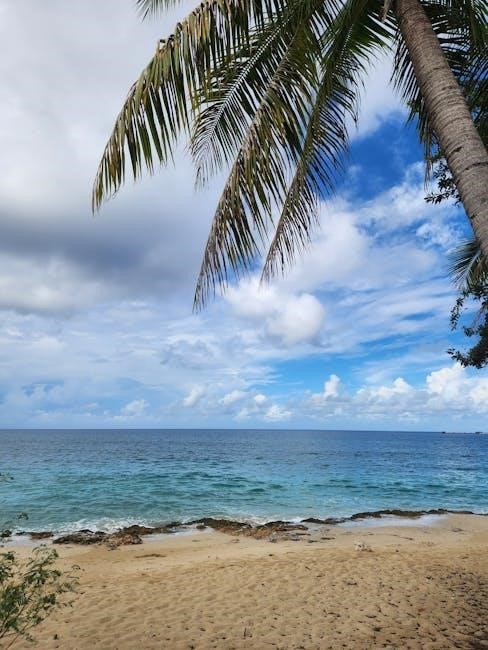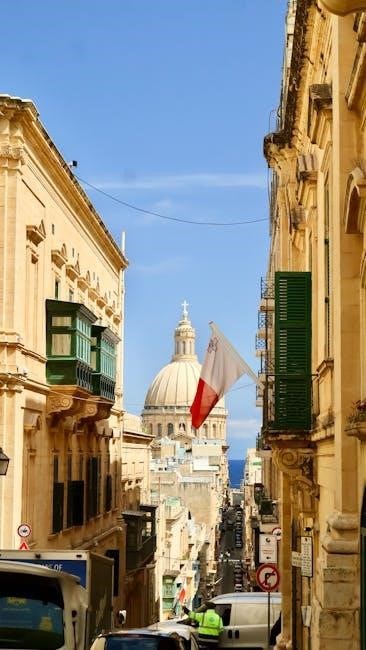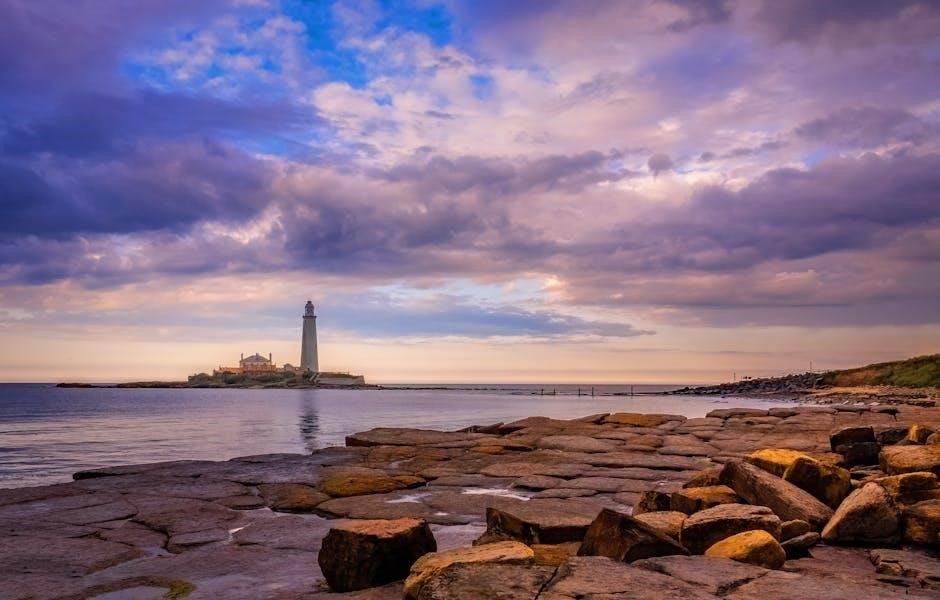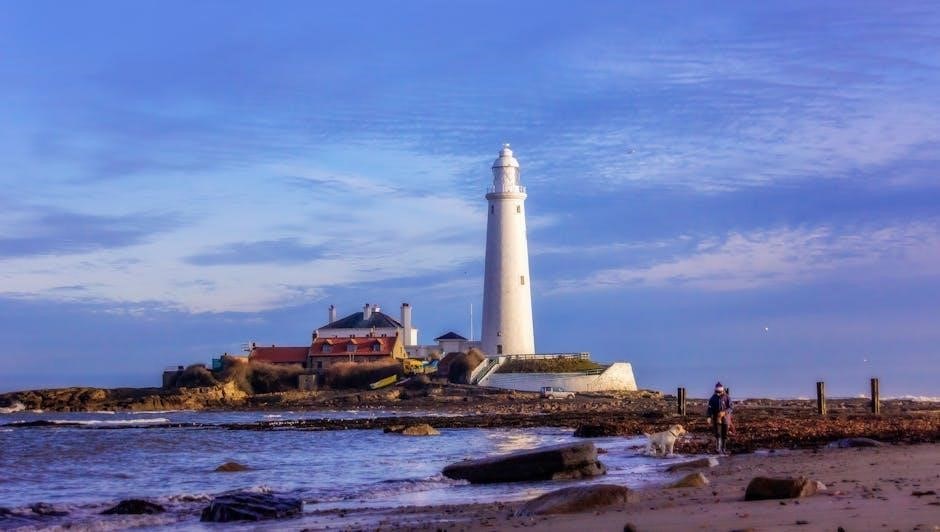St. John USVI is a tropical paradise known for stunning beaches, vibrant coral reefs, and lush national parklands. Its laid-back culture offers a perfect blend of adventure, relaxation, and luxury, making it an ideal Caribbean getaway.
Overview of St. John as a Tropical Paradise
St. John USVI embodies the essence of a tropical paradise, with its pristine white-sand beaches, crystal-clear turquoise waters, and lush green hills. The island’s unspoiled natural beauty, vibrant coral reefs, and serene atmosphere create a tranquil retreat for travelers. Its unique blend of relaxation and adventure attracts those seeking both peaceful escapes and exhilarating experiences. From snorkeling in the Caribbean Sea to exploring scenic hiking trails, St. John offers a perfect getaway for nature lovers and luxury seekers alike, making it a gem of the U.S. Virgin Islands.
Key Attractions: Beaches, Coral Reefs, and National Parklands
St. John USVI is renowned for its breathtaking beaches, vibrant coral reefs, and expansive national parklands. Iconic spots like Trunk Bay and Cinnamon Bay offer pristine white sands and turquoise waters, perfect for swimming and snorkeling. The coral reefs teem with marine life, making them a paradise for divers. Over 7,000 acres of the island are protected as part of the Virgin Islands National Park, featuring lush hiking trails, hidden coves, and ancient historical sites. These natural wonders provide endless opportunities for exploration and relaxation, showcasing St. John’s unique beauty and ecological significance.
Island Culture and Lifestyle
St. John USVI embodies a unique blend of Caribbean charm and American influences, creating a vibrant cultural tapestry. The island’s laid-back lifestyle is characterized by its warm, welcoming community and a deep connection to nature. Locals and visitors alike embrace the peaceful rhythm of island life, often gathering at beachside cafes or local festivals celebrating music, art, and tradition. The island’s culture is further enriched by its historical sites, which reflect its indigenous and colonial past. This harmonious mix of heritage and modern island living makes St. John a truly special destination for cultural immersion and relaxation.

Geography and Climate of St. John
St. John, located in the U.S. Virgin Islands, features a diverse geography with stunning beaches, lush hills, and tropical forests, under a warm, sunny Caribbean climate year-round.
Location in the U.S. Virgin Islands
St. John is the smallest island in the U.S. Virgin Islands, located in the northeastern Caribbean. It lies approximately 4 miles east of St. Thomas and 40 miles west of the British Virgin Islands. The island is part of the Virgin Islands archipelago, which also includes St. Croix and St. Thomas. With only 20 square miles, St. John is a compact but stunning destination, boasting crystal-clear waters, white-sand beaches, and lush green landscapes. Over 60% of the island is protected as Virgin Islands National Park, preserving its natural beauty for generations to explore and enjoy. Its strategic location makes it easily accessible by ferry from St. Thomas, while its small size ensures an intimate and immersive Caribbean experience.
Topography: Beaches, Hills, and Forests
St. John’s diverse topography features pristine beaches, rolling hills, and lush forests. The island’s coastline is adorned with iconic beaches like Trunk Bay and Cinnamon Bay, known for their white sand and crystal-clear waters. Inland, the terrain rises to hills covered in tropical vegetation, offering breathtaking panoramas of the Caribbean Sea. Dense forests dominate much of the island, with mahogany, bay, and gum trees creating a verdant landscape. Virgin Islands National Park preserves these natural wonders, providing hiking trails and scenic overlooks that showcase the island’s ecological richness. This varied topography makes St; John a unique and captivating destination.
Climate: Best Times to Visit
St. John enjoys a tropical marine climate, with warm temperatures year-round, averaging 75°F to 85°F. The dry season, from December to June, is the best time to visit, offering sunny days and low humidity, perfect for snorkeling, hiking, and beach activities. The wet season, from July to November, brings occasional rain showers but maintains the island’s lush landscapes. Summer months also offer opportunities to witness sea turtle nesting sites. Plan your visit according to your preferences for weather and activities, ensuring a memorable experience in this Caribbean paradise.

Getting to St. John
Travelers typically fly into St. Thomas’s Cyril E. King Airport, then take a ferry or private boat to St. John, a scenic and convenient journey.
Flights to St. John
St. John does not have its own airport, so travelers typically fly into Cyril E. King Airport on St. Thomas (STT). Major airlines like American Airlines, Delta, and United offer frequent flights to St. Thomas. From there, visitors take a ferry or private boat to St. John. There are no direct flights to St. John, but the connecting journey is straightforward. Once on St. Thomas, the ferry ride to St. John takes about 20-40 minutes, depending on the route. Travelers should book flights in advance, especially during peak season, to secure the best rates and ensure smooth connections.
Ferry Services to the Island
Ferry services are the primary way to reach St. John, as the island lacks an airport. Regular ferry routes connect St. John to St. Thomas, with departures from Charlotte Amalie and Red Hook. The journey takes 20-40 minutes, depending on the route. Passenger ferries and car ferries operate frequently, with multiple daily trips. Visitors can also use private charter services for added convenience. It’s advisable to check ferry schedules in advance, especially during peak seasons, to plan your trip seamlessly. Arriving early at the harbor ensures a smooth boarding process.
Transportation Options on the Island
St. John offers a variety of transportation options for getting around. Renting a car or jeep is highly recommended, as it provides flexibility to explore the island’s scenic roads and hidden beaches. Taxis are widely available, especially at popular spots like beaches and the ferry dock. Public transportation, such as the island’s shuttle service, is another affordable option, though less frequent. Walking and biking are also great ways to experience the island’s charm, particularly in areas like Cruz Bay. Advanced booking for rentals is suggested during peak seasons to ensure availability.

Accommodation in St. John
St. John offers a variety of accommodations, from luxury resorts to cozy vacation rentals, villas, and eco-friendly options, catering to all preferences and budgets.
Luxury Resorts and Hotels
St. John’s luxury resorts and hotels offer unparalleled comfort and elegance, often nestled in pristine coastal settings. These high-end accommodations feature private beaches, gourmet dining, and world-class spas. Many resorts boast stunning ocean views, infinity pools, and exclusive access to water sports. The Westin St. John Resort & Spa and the Ritz-Carlton St. Thomas are top choices, offering lavish amenities and exceptional service. These properties cater to travelers seeking a sophisticated island experience, blending tropical charm with modern luxury. Staying at one of these resorts ensures a memorable and indulgent getaway on this breathtaking Caribbean island.
Vacation Rentals and Villas
St. John offers a wide range of vacation rentals and villas, perfect for travelers seeking privacy and personalized experiences. From cozy beachside cottages to sprawling luxury villas, these properties provide ample space for families, couples, and groups. Many rentals feature private pools, fully equipped kitchens, and stunning ocean views. Villas often include amenities like outdoor decks, hot tubs, and breathtaking sunsets. Rentals are available in various locations, from secluded hillsides to beachfronts, offering flexibility and convenience. Local property management companies ensure smooth arrangements, making these options ideal for creating a home-away-from-home experience on the island.
Budget-Friendly Options
St. John offers budget-friendly accommodations for travelers seeking affordable options. Small guesthouses, eco-lodges, and cost-effective vacation rentals provide comfortable stays without breaking the bank. Many of these options are centrally located in Cruz Bay or Coral Bay, offering easy access to beaches and amenities. Camping within Virgin Islands National Park is another affordable choice for nature enthusiasts. Additionally, booking during the off-season or opting for self-catering rentals can significantly reduce costs. These options ensure that visitors can enjoy the island’s beauty while staying within their budget, making St. John accessible to all types of travelers. Planning ahead is key to securing the best deals.

Planning Your Trip
Plan your trip to St. John by researching accommodations, creating an itinerary, and budgeting for activities. Timing your visit during the dry season ensures optimal weather and experiences.
Best Time to Visit St. John
The best time to visit St. John is during the dry season, from December to June, when the weather is calm and sunny. Temperatures range from 70°F to 85°F, ideal for beach activities and outdoor adventures. This period also coincides with festivals and events, enhancing the island’s vibrant atmosphere. Summer months, from July to November, are warmer and wetter, but offer fewer crowds and lower prices. Plan accordingly based on your preferences for weather, costs, and experiences.
How Long to Stay on the Island
A stay of 5-7 days is ideal to fully experience St. John’s beauty and charm. This allows time to explore the island’s stunning beaches, hike through the national park, and enjoy water activities. With over 30 beaches and numerous trails, a shorter visit might feel rushed. A week also gives you the chance to relax and soak in the laid-back Caribbean vibe. If you plan to visit nearby islands like the British Virgin Islands, add a few extra days to your itinerary for a well-rounded trip.
Creating an Itinerary
Plan your trip thoughtfully to maximize your St. John experience. Start by prioritizing must-see spots like Trunk Bay and the Virgin Islands National Park. Allocate mornings for beach hopping or snorkeling, while afternoons can be reserved for hiking or exploring Cruz Bay. Evenings are perfect for dining and relaxing. Allow flexibility in your schedule to accommodate spontaneous adventures or relaxation days. Consider your interests—whether it’s water sports, cultural experiences, or simply unwinding—to tailor your itinerary. A well-balanced plan ensures a mix of adventure, relaxation, and immersion in the island’s unique charm.

Activities and Things to Do
St. John offers a variety of activities, from water sports to hiking. Explore its natural beauty, vibrant culture, and enjoy both adventure and relaxation.
Beaches: Trunk Bay, Cinnamon Bay, and More
St. John is renowned for its stunning beaches, each offering a unique experience. Trunk Bay, with its crystal-clear waters and vibrant coral reefs, is a snorkeler’s paradise. Cinnamon Bay, known for its serene atmosphere and soft white sand, is perfect for relaxation. Maho Bay and Salt Pond Bay are lesser-known gems, offering tranquility and breathtaking views. These beaches provide ample opportunities for swimming, sunbathing, and exploring. Many are equipped with picnic areas and restrooms, making them accessible for visitors. Whether you seek adventure or peace, St. John’s beaches deliver unforgettable experiences.
Snorkeling and Scuba Diving
St. John offers world-class snorkeling and scuba diving opportunities, with its vibrant coral reefs and diverse marine life. Trunk Bay is famous for its underwater snorkeling trail, while Cinnamon Bay and Maho Bay provide calm waters perfect for spotting sea turtles. For experienced divers, the East End and south shore offer deeper dives with stunning drop-offs and reef formations. The island’s crystal-clear waters and abundant marine life make it a paradise for underwater exploration. Many local dive shops offer guided tours and equipment rentals, ensuring an unforgettable experience for all skill levels.
Hiking and National Park Adventures
St. John is a hiker’s paradise, with over 20 trails winding through Virgin Islands National Park. The park, covering more than half the island, offers diverse terrain, from coastal paths to lush forests. The Reef Bay Trail, a 2.2-mile descent, features ancient petroglyphs and tropical waterfalls. The Ram Head Trail offers panoramic ocean views, while the Caneel Hill Trail provides a challenging yet rewarding climb. Hikers can explore tropical forests, scenic overlooks, and hidden coves. Wildlife, including tropical birds and iguanas, adds to the adventure. Bring water, wear sturdy shoes, and enjoy the island’s natural beauty responsibly.
Water Sports and Boating
St. John’s crystal-clear waters offer endless opportunities for water sports and boating adventures; Snorkeling, kayaking, and paddleboarding are popular ways to explore the island’s vibrant marine life. Rent a sailboat or powerboat to navigate the coastline or visit nearby islands like the British Virgin Islands. Scuba diving reveals stunning coral reefs, while jet-skiing and parasailing provide thrilling experiences. Many beaches, such as Trunk Bay and Cinnamon Bay, offer equipment rentals and guided tours. Boating excursions often include stops at secluded coves and snorkeling hotspots, making St. John a haven for water enthusiasts seeking adventure and relaxation.

Dining and Nightlife
St. John offers a mix of fresh seafood, Caribbean flavors, and upscale dining. Beachside eateries and casual spots cater to diverse tastes, while nightlife includes laid-back bars and live music.
Top Restaurants on the Island
St. John is renowned for its exceptional dining scene, blending gourmet cuisine with Caribbean charm. The island’s top restaurants offer fresh seafood, steak, and innovative dishes, often with stunning ocean views. Fine dining options like The Terrace and ZoZo’s showcase sophisticated menus in elegant settings. For a more casual experience, spots like The Beach Bar and Joe’s Diner serve up delicious island favorites. Many restaurants emphasize locally sourced ingredients, ensuring a true taste of St. John’s culinary excellence. Whether you’re seeking romantic ambiance or laid-back dining, the island’s eateries cater to every preference.
Local Cuisine and Seafood
St. John’s local cuisine is a vibrant blend of Caribbean flavors, emphasizing fresh seafood and island ingredients. Popular dishes include conch fritters, fish tacos, and lobster, often seasoned with spices like garlic, ginger, and cilantro. Local favorites such as mango salsa and coconut-infused desserts highlight the island’s tropical bounty. Fresh catches from the Caribbean Sea are a staple, with mahi-mahi, grouper, and snapper frequently featured on menus. The island’s culinary scene also reflects its cultural diversity, with African, European, and Caribbean influences. Don’t miss the opportunity to savor authentic island flavors at beachside grills or casual eateries.
Beach Bars and Nightlife
St. John’s beach bars and nightlife offer a laid-back, tropical vibe perfect for unwinding. Popular spots like The Beach Bar and Woody’s Seafood Saloon serve up frozen cocktails and island rum punches. Many bars feature live music, ranging from reggae to acoustic sets, creating a lively yet relaxed atmosphere. While the island isn’t known for a wild party scene, its beachside gatherings and sunset happy hours provide ample opportunities to connect with locals and visitors alike. For a more vibrant experience, some bars host themed nights or dance events under the stars.

Cultural Experiences
St. John offers a rich cultural heritage, blending history, art, and traditions. Explore colonial-era ruins, visit local artisans, and experience vibrant festivals celebrating the island’s unique identity.
Historical Sites and Museums
St. John is home to a variety of historical sites and museums that showcase its colonial past. The Annaberg Plantation, a well-preserved sugar plantation, offers insights into the island’s agricultural heritage. The Reef Bay Sugar Mill, another historic site, highlights the sugar industry’s significance. Visitors can explore these sites to learn about the island’s history and the lives of its former inhabitants. These museums and ruins provide a fascinating glimpse into St. John’s rich cultural past, making them must-visit destinations for history enthusiasts.
Local Artisans and Craft Shops
St. John is a haven for those who appreciate local craftsmanship. The island is dotted with boutique shops and markets showcasing handmade goods by local artisans. From intricate woodwork to vibrant textiles, these creations reflect the island’s culture and natural beauty. Many shops feature unique jewelry, pottery, and artwork inspired by the Caribbean setting. Visitors can also find one-of-a-kind souvenirs, such as hand-painted ceramics and woven baskets. Supporting these local artisans not only brings home memorable treasures but also helps sustain the island’s creative community and economy.
Festivals and Events
St. John comes alive with vibrant festivals and events that celebrate its rich culture and stunning natural beauty. The annual St. John Festival in July is a highlight, featuring parades, live music, and delicious local cuisine. Seasonal events like the St; John Food and Wine Experience showcase the island’s culinary excellence. Full moon parties and beach bonfires add to the lively atmosphere. These gatherings provide a unique opportunity to connect with locals and experience the island’s spirit firsthand. Whether it’s a cultural celebration or a lively party, St. John’s events offer unforgettable memories for visitors of all ages.

Practical Information
St. John offers essential practical information for travelers, including safety tips, health services, and local etiquette, ensuring a smooth and enjoyable island experience for all visitors.
Safety Tips for Travelers
Ensure a secure trip to St. John by taking necessary precautions. Secure valuables in hotel safes and be mindful of belongings in public areas. Avoid swimming alone at remote beaches and always watch for strong currents. Use reef-safe sunscreen to protect marine life. When driving, follow local road signs and exercise caution on narrow, winding roads. Avoid walking alone at night and use licensed taxis for transportation. Stay hydrated, wear sunscreen, and plan water activities according to your swimming ability. Keep emergency numbers handy, such as 911 and the marine patrol for water-related incidents. Respect the island’s environment to ensure a safe and enjoyable stay.
Health and Medical Services
St. John offers limited medical facilities, with the Myrah Keating Smith Community Health Center providing basic care. For serious conditions, patients are often transferred to St. Thomas. It’s essential to bring personal medications and ensure health insurance covers emergencies. Take precautions against sun exposure, dehydration, and marine life encounters. Use reef-safe sunscreen and stay hydrated. Insect repellent can prevent mosquito-borne illnesses. While the island is generally safe, having a first-aid kit is wise. Plan ahead for any medical needs, as resources are limited compared to larger islands. Always carry a credit card or cash for medical services, as not all providers accept insurance.
Local Etiquette and Customs
Respecting St. John’s environment and culture is key to a harmonious visit. Remove all trash, especially on beaches, to preserve the island’s pristine beauty. Dress modestly when visiting churches or town areas, and avoid touching or damaging coral reefs. Greet locals with a friendly smile, as hospitality is deeply rooted in Virgin Islands culture. Tipping at restaurants and bars is customary, typically 15-20%. Respect historical sites and learn about the island’s heritage to appreciate its rich history. By embracing these customs, you contribute to the island’s charm and community spirit.

Responsible Travel
Preserve St. John’s natural beauty by supporting eco-friendly initiatives, reducing waste, and respecting wildlife. Contribute to the local economy by choosing sustainable accommodations and businesses.
Eco-Tourism and Environmental Conservation
St. John is a leader in eco-tourism, with over 60% of its land protected as Virgin Islands National Park. This pristine environment fosters biodiversity and offers opportunities to engage in sustainable tourism. Visitors can participate in conservation efforts, such as coral reef restoration and wildlife monitoring. Eco-friendly accommodations and tour operators prioritize minimizing their ecological footprint. By choosing green practices, travelers help preserve the island’s fragile ecosystems for future generations. The island’s commitment to environmental stewardship makes it a model for responsible travel in the Caribbean.
Supporting Local Businesses
Supporting local businesses is vital to St. John’s economy and community. The island is home to numerous small, family-owned shops, restaurants, and services that rely on tourist support. By choosing local vendors, visitors directly contribute to the island’s prosperity and help preserve its unique character. From artisanal crafts to fresh seafood, local enterprises offer authentic experiences that showcase the island’s culture. Many businesses also adhere to sustainable practices, aligning with St. John’s eco-conscious values. Engaging with these businesses fosters meaningful connections and ensures a vibrant future for the community.
Respecting Marine Life
Respecting St. John’s marine life is essential for preserving its vibrant coral reefs and diverse ecosystem. Avoid touching or standing on coral reefs, as this can cause irreversible damage. Refrain from feeding fish or other marine creatures, as it disrupts their natural behavior. When snorkeling or diving, avoid wearing chemical-based sunscreens that harm coral. Support reef-safe practices and respect protected areas like sea turtle nesting sites. By adopting these mindful habits, visitors can help safeguard the island’s underwater beauty for future generations to enjoy. Responsible tourism ensures the preservation of St. John’s marine treasures.
St. John, USVI, is a must-visit Caribbean gem, blending stunning natural beauty with rich culture. Plan your trip for unforgettable outdoor adventures, cultural experiences, and responsible island exploration.
Final Thoughts on Visiting St. John
St. John, USVI, offers an unparalleled Caribbean escape, blending pristine beaches, lush landscapes, and vibrant culture. Whether seeking adventure, relaxation, or cultural immersion, the island delivers unforgettable experiences. Its luxury resorts, charming villas, and budget-friendly options cater to every traveler. The local cuisine, rich history, and warm community add depth to your journey. Remember to embrace eco-conscious travel and respect marine life. Plan your visit thoughtfully, staying 5-7 days to explore fully. Create lasting memories snorkeling, hiking, or simply soaking in the island’s serene beauty. St. John is a true gem—start planning your adventure today!
Encouragement to Explore the Island
Embark on a journey to uncover the hidden gems of St. John, where every corner reveals a new adventure. From the crystal-clear waters of Trunk Bay to the serene hiking trails of the Virgin Islands National Park, the island invites you to explore its untouched beauty. Discover secluded beaches, vibrant marine life, and the rich cultural heritage that defines this tropical paradise. Whether you seek relaxation, adventure, or a deeper connection with nature, St. John promises an unforgettable experience. Take the first step to plan your visit and let the island’s charm leave you with lifelong memories.

